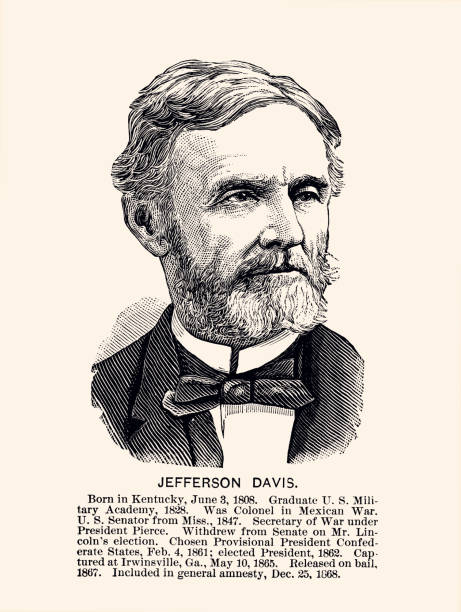
Portrait of Jeferson Davis. Vintage engraving circa late 19th century. Digital restoration by pictore.
Browse 1,000+ confederate states of america stock illustrations and vector graphics available royalty-free, or start a new search to explore more great stock images and vector art.

Portrait of Jeferson Davis. Vintage engraving circa late 19th century. Digital restoration by pictore.

An African-American slave is arrested and separated from his family. Engraving published 1895. Original edition is from my own archives. Copyright has expired and is in Public Domain.

Switzerland canton coat of arms flag, Swiss Aargau state crest shield, vector sign. Schweiz kanton or Swiss canton heraldry symbol, heraldic and armorial badge with stars and waves, blue and black

Graphic detailed gray old revolver with wooden handle. On background with silhouette rose branch with thorns. Vector icon.

CSS Harriet Lane Steam Ship was designed by Engineer William Web and launch November 1857 for the Treasury Department. The ship later served for both the Union and Confederate Navies during the American Civil War. Illustration published in Steam Navy of the United States by Frank M. Bennett (Press of W.T. Nicholson: Pittsburgh) in 1896. Copyright expired; artwork is in Public Domain.

Engraving of Recruiting for Hawkins' New York Zouaves, 1861 Civil War Engraving from "Famous Leaders and Battle Scenes of the Civil War," Published in 1864. Original edition from my own archives. Copyright has expired on this artwork. Digitally restored.
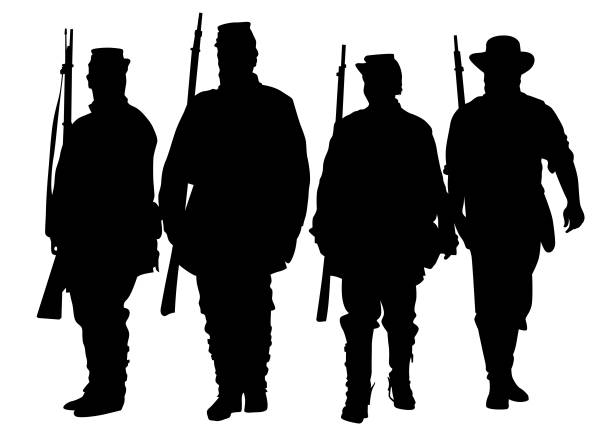
American soldiers in uniform of civil war times on white background

Engraving of General Blenker, 1861 from "Famous Leaders and Battle Scenes of the Civil War," Published in 1864. Copyright has expired on this artwork. Digitally restored.

Confederate States Army charging - Scanned 1887 Engraving

Confederate General Thomas "Stonewall" Jackson at Chancellorsville in Virginia.The Battle of Chancellorsville (Lee's perfect battle) was a major battle of the American Civil War (1861–1865), and the principal engagement of the Chancellorsville campaign.Vintage etching circa late 19th century.

Graphic black and white detailed old revolver with roses and thorns. On gray vintage background. Vector icon.

Engraving of General Fremonts Army on its March from Tipton to Warsaw over the Praires to Haw Creek, Missouri, 1861 Civil War Engraving from "Famous Leaders and Battle Scenes of the Civil War," Published in 1864. Original edition from my own archives. Copyright has expired on this artwork. Digitally restored.

Switzerland, Swiss canton flag and coat of arms of Obwalden city, vector crest shield. Schweiz kanton or Obwald Switzerland canton heraldic sign and coat of arms or armorial state and city crest

Engraving of Cape Girardeau, Missouri, an Important Strategic Position on the Mississippi River Between Cairo and St. Louis from "Famous Leaders and Battle Scenes of the Civil War," Published in 1864. Copyright has expired on this artwork. Digitally restored.

Jefferson Finis Davis (1808 - 1889) - American politician, and the only President of the Confederate States from 1861 to 1865. Wood engraving, published in 1893.

Engraving of the Grand Review in Washington of Eight Batteries of Artillery and Three Regiments of Cavalry by President Lincoln, General McClellan and a Portion of the Cabinet, September 24, 1861 from "Famous Leaders and Battle Scenes of the Civil War," Published in 1864. Copyright has expired on this artwork. Digitally restored.

Confederate soldier kisses his wife good-bye. His mother and three African-American slaves wait to wish him farewell. Engraving published 1896. Original edition is from my own archives. Copyright has expired and is in Public Domain.
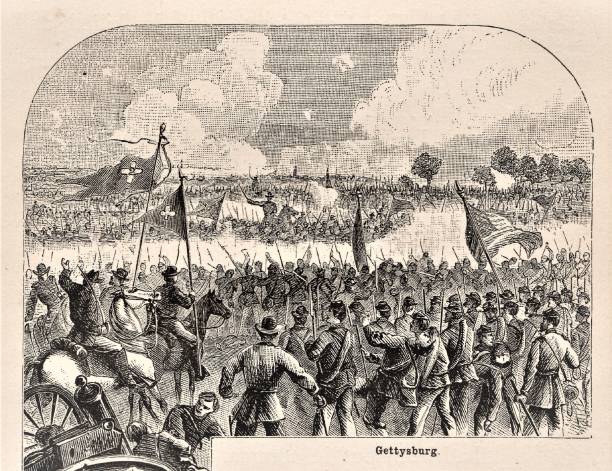
Union and Confederate soldiers fight at Gettysburg, Pennsylvania. American Civil War. Illustration published in First Lessons in Our Country’s History by William Swinton, A.M. (Ivison, Blakeman, Taylor, & Company, New York and Chicago) in 1872.

Engraving of Battle of Major General George B. McClellan Civil War Engraving from "Famous Leaders and Battle Scenes of the Civil War," Published in 1864. Copyright has expired on this artwork. Digitally restored.

Benjamin F. Butler's Contraband Decision: Major General Benjamin Butler refused to return escaped slaves to slaveholders who supported the Confederacy.

Engraving of Battle of Colonel Elmer E. Ellsworth Civil War Engraving from "Famous Leaders and Battle Scenes of the Civil War," Published in 1864. Copyright has expired on this artwork. Digitally restored.

Engraving of the Capture of the Propeller "Fanny" in Pamlico Sound by three Confederate Steamers while Conveting Men and Stores to the Twentieth Indiana Regiment, 1861 Civil War Engraving from "Famous Leaders and Battle Scenes of the Civil War," Published in 1864. Original edition from my own archives. Copyright has expired on this artwork. Digitally restored.

Vintage engraving of a scene from the American Civil War, Confederate sharp shooters and Swamp hunters attacking Union morter boats of the Mississippi River

Strake's Louisiana Brigade Fighting with rocks at the embankment near the Deep Cut in Virginia - Scanned 1886 Engraving

Vintage engraving from 1863 of a map of the Battle of Belmont which was fought on November 7, 1861, in Mississippi County, Missouri. It was the first combat test in the American Civil War for Brig. Gen. Ulysses S. Grant. On November 6, Grant sailed from Cairo, Illinois, to attack the Confederate fortress at Columbus, Kentucky. The next morning, he learned that Confederate troops had crossed the Mississippi River to Belmont, Missouri. He landed his men on the Missouri side and marched to Belmont. Grant's troops overran the Confederate camp and destroyed it. However, the scattered Confederate forces quickly reorganized and were reinforced from Columbus. They then counterattacked, supported by heavy artillery fire from across the river. Grant retreated to his riverboats and took his men to Paducah, Kentucky.

Vintage engraving of a Flag of Confederate States of America

Civil War troops charge into battle. Engraving published 1896. Original edition is from my own archives. Copyright has expired and is in Public Domain.

The Sanitary Commission provides medical care for soldiers injured and disabled during the Civil War. Engraving published 1896. Original edition is from my own archives. Copyright has expired and is in Public Domain.

From Barness Primary History of the United States published in 1885
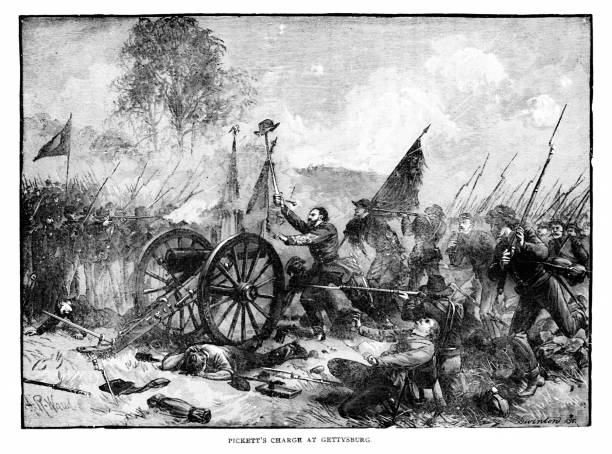
In the battle of Gettysburg, Confederate General Pickett charges with about 12,000 soldiers, double the amount on the Union side. The Union army defeated the Confederate soldiers in the turning point of the American Civil War. The most casualties in one battle occurred July 1–3, 1863, at Gettysburg, Pennsylvania, USA. Engraving published 1895. Original edition is from my own archives. Copyright has expired and is in Public Domain.

American CIvil War Soldier - Scanned 1886 Engraving

Set of vintage motorcycle emblems and design elements.

4th of July Independence Day badge, background with metal circular polished, brushed concentric texture, chrome, silver, steel for design concepts, wallpapers, web and prints. Vector illustration.

Curtis-Lee, a home belonging to George Washington Parke Custis and, later, Confederate General Robert E Lee, Arlington, Virginia, USA. Photograph engraving published 1896. Copyright expired; artwork is in Public Domain.

Illustration of a American Civil War, Naval Battle USS Iroquois Vs Confederate

Vintage engraving of the Monument to the Confederate Dead, Broad Street, Augusta, Georgia, USA. 1882

Battle of Missionary Ridge, Chattanooga, Tennessee, USA, during the American Civil War. Engraving published 1895 . This edition is in my private collection. Copyright is in public domain.

The CSS Alabama sinks after battle with USS Kearsarge in 1864 off the coast of France, where it went to get repaired, during the American Civil War. Engraving published 1896. Original edition is from my own archives. Copyright has expired and is in Public Domain.

The Union warship Kearsarge sunk the Confederate ship Alabama in a battle during the U.S. Civil War, June 19, 1864, off the coast of France. Painted by J O Davidson. Engraving published 1898. Copyright expired; artwork is in Public Domain.

Vintage engraving of a scene from the American Civil War, CSS Virginia ironclad sinking the USS Congress in battle off Newport News, Virginia.

Map of Confederate Army Raids in Maryland. Illustration engraving published 1895. Original edition is from my own archives. Copyright has expired and is in Public Domain.
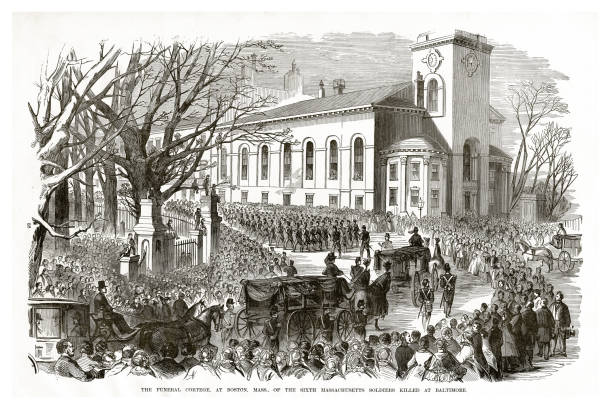
Engraving of the The Funeral Cortege at Boston, Massachusetts of the Soldiers Killed at Baltimore Civil War Engraving from "Famous Leaders and Battle Scenes of the Civil War," Published in 1864. Copyright has expired on this artwork. Digitally restored.

Vintage engraving of CSS Virginia was the first steam-powered ironclad warship built by the Confederate States Navy during the first year of the American Civil War

Switzerland, Swiss canton, region state flag, vector Vaud city coat of arms shield. Schweiz kanton or Swiss canton heraldry symbol, heraldic armorial badge with Liberte et Patrie slogan on shield
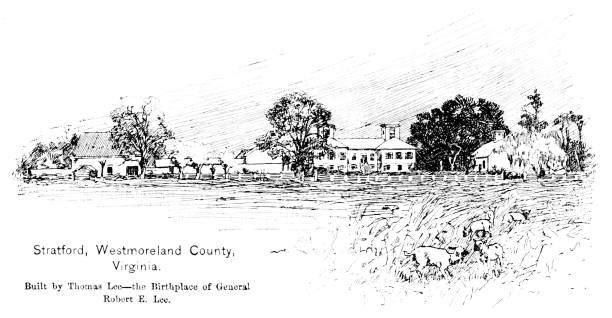
Birthplace of Confederate General Robert E. Lee in Stratford Westmoreland County, Virginia. Illustration engraving published 1896. Original edition is from my own archives. Copyright has expired and is in Public Domain.

Portrait of Confederate General Thomas Jonathan "Stonewall" Jackson (January 21, 1824 – May 10, 1863) of West Virginia. Engraving of a photograph published 1896. Original edition is from my own archives. Copyright has expired and is in Public Domain.

Graphic detailed old revolver with wooden handle. On green vintage background. Vector icon set.

Portrait of Colonel Walter Leman Mann (1838–1875) was born in Mississippi, moved to Texas, and attended the University of Virginia. Mann a cavalry regiment that guarded the Gulf coast at Galveston, Texas. Engraving of a photograph published 1896. Original edition is from my own archives. Copyright has expired and is in Public Domain.

Engraving From 1873 Featuring The American Civil War General For The Confederate Army, Thomas Jonathan "Stonewall" Jackson. Jackson Lived From 1824 Until 1863.

Engraving of Camp Lillie, Headquarters of General Fremont, Jefferson City, Missouri, October 1, 1861, Civil War Engraving from "Famous Leaders and Battle Scenes of the Civil War," Published in 1864. Original edition from my own archives. Copyright has expired on this artwork. Digitally restored.

Swiss canton flag Switzerland Lucerne coat of arms, Schweiz country region state vector sign. Swiss canton or kanton of Lucerne, heraldry shield and armorial badge, blue and white crest

Vintage engraving of Battle of Hampton Roads, American Civil War, The Battle of Hampton Roads, often referred to as either the Battle of the Monitor and Merrimack (or Virginia) or the Battle of Ironclads, was the most noted and arguably most important naval battle of the American Civil War
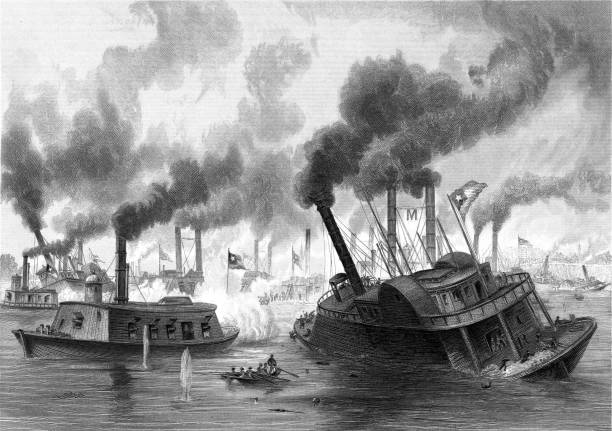
The battle started with an exchange of gunfire at long range, the federal gunboats setting up a line of battle across the river and firing their rear guns at the cottonclads coming up to meet them as they entered the battle stern first. Two of the four rams advanced beyond the line of the gunboats and rammed or otherwise disrupted the movements of their opponents; the other rams misinterpreted their orders and did not enter the battle at all. With the federal rams and gunboats not coordinating their movements and the Confederate vessels operating independently, the battle soon was reduced to a melee. It is agreed by all that the ram flagship, Queen of the West, initiated hostilities by slamming into CSS Colonel Lovell. She was then rammed in turn by one or more of the remaining cottonclads. Ellet was at this time wounded by a pistol shot in his knee, thereby becoming the only casualty on the Union side. (In the hospital, he contracted measles, the childhood disease that killed some 5,000 soldiers during the war. The combination of the disease and the debilitation caused by his wound was too great, and he died on June 21.) The remainder of the battle is obscured by more than the fog of war. Several eyewitness accounts are available; however, they are mutually contradictory to a greater degree than usual. All that is certain is that at the end of the battle, all but one of the cottonclads were either destroyed or captured, and one Yankee boat, Queen of the West, was disabled. The sole boat to escape, CSS General Earl Van Dorn, fled to the protection of the Yazoo River, just north of Vicksburg. Personnel losses among the Confederates cannot be estimated reliably.

From Barness Primary History of the United States published in 1885